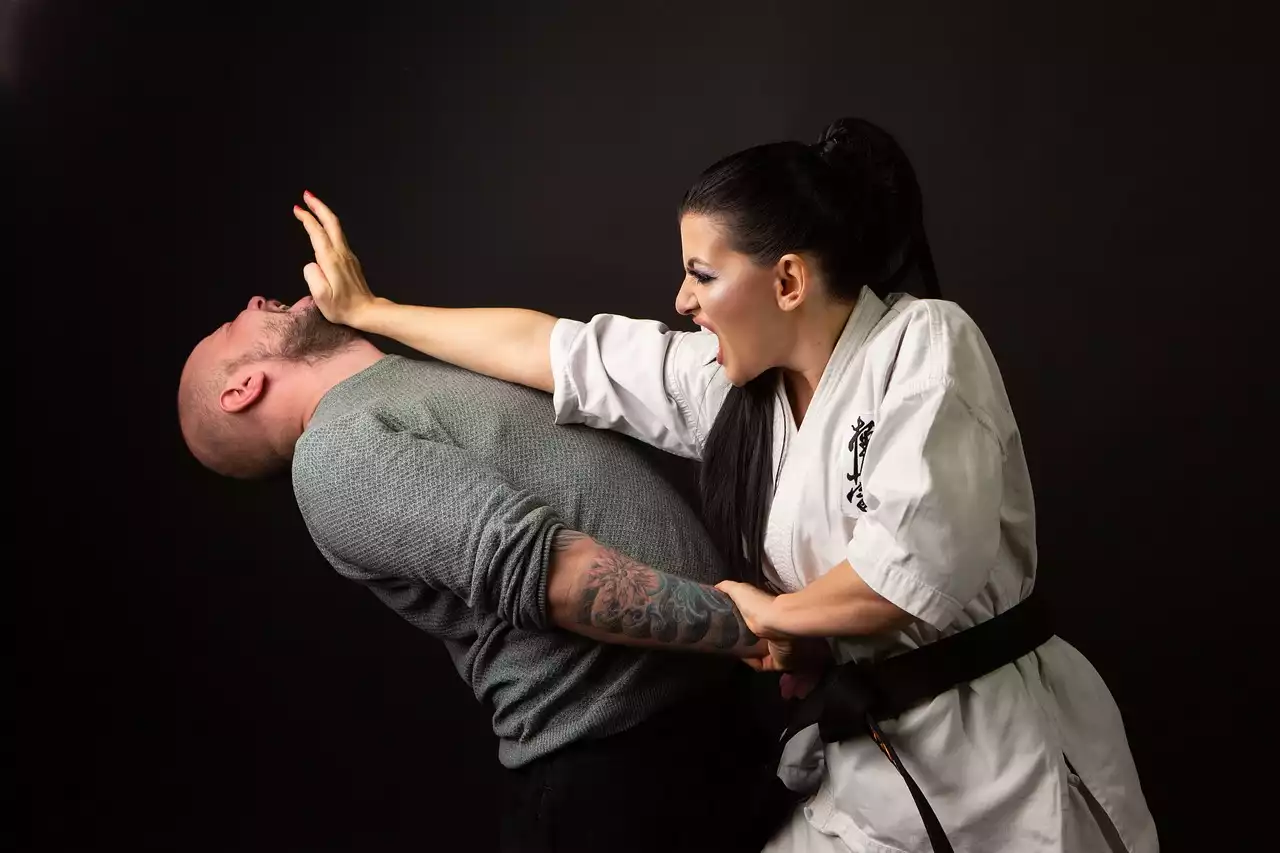Traditional Karate - History, Techniques, and Benefits
Karate is a martial art that originated in the Ryukyu Islands of Japan, specifically Okinawa. It has its roots in various forms of Chinese martial arts and was developed by Okinawans due to the island’s isolation from mainland Japan. Traditional karate is largely based on the teachings of the founder of Okinawan Karate, Funakoshi Gichin. Funakoshi codified the various kata and techniques of Okinawan karate into the Shotokan style, which is still practiced today.
Traditional karate focuses on the development of self-defense techniques, kata, and forms. Kata is pre-arranged sequences of blocks, strikes, and kicks performed against an imaginary opponent. Forms are used to develop the strength and flexibility of a practitioner and to perfect the technique of karate moves. Self-defense techniques are used to defend against an attacker and emphasize the use of defense rather than offense.
Traditional karate has several benefits, both physical and mental. Physically, it helps to build strength, speed, and agility, as well as improve balance and coordination. Mentally, it helps to improve focus, discipline, and self-confidence. It also teaches practitioners about respect, humility, and the importance of perseverance.
Modern Karate - History, Techniques, and Benefits
Modern karate is a relatively new style of martial art and has its roots in the traditional karate styles developed in the early 1900s. It is an evolution of traditional karate, emphasizing more sport-oriented elements such as sparring and competitions. Modern karate has been popularized by organizations such as the World Karate Federation (WKF), which oversees international karate competitions.
Modern karate focuses on the development of self-defense techniques, kata, and sparring. Self-defense techniques are similar to those used in traditional karate but are adapted to the practicality of modern life. Kata is also used to develop technique and accuracy, but with a more sport-oriented focus. Sparring is the main component of modern karate and is used to hone the skills of practitioners.
Modern karate has several benefits, both physical and mental. Physically, it helps to develop strength and speed, as well as improve coordination and balance. Mentally, it teaches practitioners about respect, discipline, and the importance of hard work. It also helps to develop confidence, focus, and mental toughness.
Pros and Cons of Traditional and Modern Karate
Each style of karate has its advantages and disadvantages, and it is important to consider these when deciding which one is right for you. Traditional karate is rooted in ancient martial arts and emphasizes self-defense, kata, and forms. It is great for those who are looking for a physical and mental challenge, and for those who want to develop self-discipline. However, it is not as useful in a practical self-defense situation, as it relies heavily on kata and forms.
Modern karate emphasizes sparring, kata, and self-defense techniques. It is great for those who are looking for a more sport-oriented approach to karate, as well as those who want to compete in tournaments. However, it does not focus as much on the mental and spiritual aspects of karate as traditional karate does.
Tips for Choosing the Right Karate Style
Choosing the right style of karate is an important decision, and there are a few things to consider when making your choice. First, decide what you want to get out of karate. Are you looking for a physical challenge? Are you looking to compete in tournaments? Or are you looking for a more traditional approach that emphasizes self-defense and forms? Once you have decided on this, you can then narrow down your choices to the traditional or modern style of karate that best suits your needs.
It is also important to consider the instructors teaching each style. The right instructor can make all the difference in your karate journey, so be sure to do your research and find one that is experienced, knowledgeable, and passionate about their art.
Training for Traditional and Modern Karate
Training for traditional and modern karate is similar in many ways, but there are a few key differences. Traditional karate focuses heavily on kata and forms, as well as self-defense techniques. Training for traditional karate usually involves a lot of repetition and emphasis on proper technique. Modern karate, on the other hand, emphasizes sparring and competitions. Training for modern karate usually involves a lot of drilling, as well as learning rules and strategies for competition.
Different Types of Traditional and Modern Karate
There are many different types of traditional and modern karate. Traditional karate styles include Shotokan, Goju-Ryu, Uechi-Ryu, and Shorin-Ryu. Modern karate styles include Kyokushin, Wado-Ryu, and Enshin. Each style has its unique techniques and principles, so be sure to do your research and find the one that best suits your needs and interests.
Traditional Karate vs. Modern Karate - What’s the Difference?
The main difference between traditional and modern karate is in the emphasis on each style. Traditional karate focuses heavily on kata, forms, and self-defense techniques, while modern karate focuses on sparring and competition. Traditional karate is often seen as a more “traditional” approach to martial arts, emphasizing discipline, respect, and humility. Modern karate is seen as a more “sport-oriented” approach, emphasizing strength, speed, and agility.
Resources for Learning Traditional and Modern Karate
There are many resources available for learning both traditional and modern karate. Many dojos, or martial arts schools, offer classes in both styles. There are also online tutorials and videos available, as well as books and magazines. For those who want to learn at their own pace, there are also many karate apps and computer programs available.









